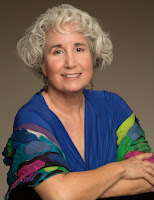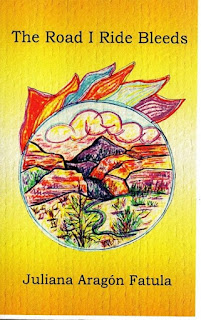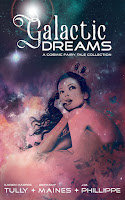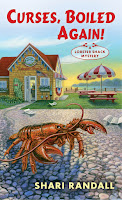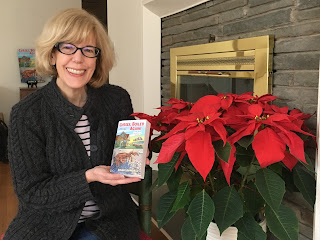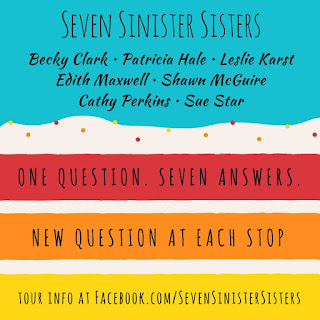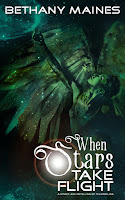Comments on Juliana Aragón Fatula’s Colorado Public Radio Interview, Chicana Writer Turns Her Stormy Colorado Past Into Poetry
/in Uncategorized/by The Stiletto Gang
http://www.cpr.org/news/story/chicana-writer-turns-her-stormy-colorado-past-poetry
link to Colorado Public Radio interview last year.
I welcome comments, feedback, critique…on my poetry and the interview in the link above. One of the comments posted to the CPR.org website, infuriated my friends, who quickly posted their comments defending me. I don’t need defending. I am what I am. But I appreciate that they have my back. They know my sense of humor and they know I laugh when I’m nervous, and I was incredibly nervous being interviewed for Colorado Public Radio. I have been sober for 27 years as has my husband. We met on a blind date and wala…
Let me say, I do not approve of parents getting drunk and beating their children with a belt. However, The River is my poem and I use poetic license to write whatever the fugly I want to write, after all, it is my herstory, my story, my past, my mother and if I have a sense of humor about the marks left on my thighs from 50 years ago and my mother so drunk she had no idea she was beating her children who cowered under the bed. What we did, my brother and I, did not warrant a beating; however, if we had repeated our behavior and one of our ten siblings had drowned in the current of the strong summer waterway, we would have gotten much worse than a beating. My mother was scared to death. She couldn’t swim. I can’t swim. I made damn sure my son can swim and he swims like a fish; he rescues kids from drowning in the river.
The River
Remember crying yourself to sleep
when Mom didn’t come home
on Christmas Eve?
Her mestiza nose,
diamond iris eyes,
red, red wine lipstick,
her ratty hair;
Mom dressed in stilettos,
her black leather jacket
with the big belt.
Her evil-honey voice
screaming with the radio,
“What ya gonna’ do
when ya get outa’ jail?
I’m gonna have some fun!”
A bottle of Bud between her legs,
cigarette smoke filling the car,
her passed out behind the wheel,
parked at The Bird Club.
Where did we hide
when she came home borracho
and whipped us for daring
to take her young ones
to swim in the river;
the river witch
waiting to drown us;
Mom waiting for us
to come out from
under the bed?
Un gato viejo, ratón tierno;
the cocoman is an old man
who likes young girls,”
Mom told us every night—
I was ten, running wild
through Duck Park,
across the train tracks,
under Black Bridge,
in the horse field,
no longer afraid
of the cocoman.
I was never as afraid
of the cocoman
as I was of Mom’s wrath,
the crosses on the back of my thighs,
the belt buckle marks on my legs . . . still.
Lest anyone believe that I only write confessional poetry about abuse and alcoholism, here is a little poem I wrote about my Chicana Garden.
Azteca Grain
Slabs of stone line the garden
tendrils hang heavy
ready to turn—
seeds drop
low, low, low
clusters pull the plant
onto its bloody bursting head
shears sharpened sit in lull
while amaranth,
Azteca grain,
grows lush.
And this little diddy about racism and being defined by the color of your skin.
Holy Bones
starless blue-black night,
la muerte dances on the grave.
not like the funky chicken dance,
more like the conga.
hips sway, the earth shakes,
the dance of the dead
down down down.
the bones bang da da bang da da bang.
el viento breezes through tired ribs.
more funny than scary.
muertos, juntos raíces,
get along when they’re dead,
porque, las calaveras
are all the same color—bone.
Anyone who knows me, knows my writing reflects who I am, where I’ve been and where I’m going. I’m gathering momentum.
Reprinted from RED CANYON FALLING ON CHURCHES: POEMS by Juliana Aragón Fatula with permission of Conundrum Press, a division of Samizdat Publishing Group, LLC. Copyright (c)Juliana Aragón Fatula, 2015.
Juliana Aragón
Fatula’s, second book, Red Canyon Falling on Churches, winner of the
High Plains Poetry Award 2016, and her
debut poetry book, Crazy Chicana in Catholic City are published by
Conundrum Press and her chapbook, The Road I Ride Bleeds,
published by Casa de Cinco Hermanas Press. She is a fifth generation Southern
Colorado Native and a lifetime member of the Sandra Cisneros’ Macondo
Foundation. She has been a writer in residence for Colorado Humanities’ Writers
in the Schools Program since 2012. Her foremost focus is education and working
with at-risk-youth. She teaches cultural diversity in her classrooms and
believes in the power of education to change lives. Her murder mystery, The
Colorado Sisters and the Atlanta Butcher, percolates daily in her head. This
will be her first novel.
New for 2018!
/in Uncategorized/by Bethany Mainesby Bethany Maines
2018 is set to be a very big year for me. I have been working feverishly through 2016 and 2017 to bring out multiple projects and 2018 is the year that many of those projects are bearing fruit. Take a peek at my upcoming releases!
February 13 – Galactic Dreams (Just in time for Valentine’s Day!)
I will be part of a new series from my publishing company called Galactic Dreams featuring stories that are part science-fiction, part fairy tale, part romance and all adventure. Galactic Dreams Volume 1 will feature 3 novellas of fairy tales “reimagined for a new age—the future,” including Soldier, Princess, Rebel Spy (Mulan) from Karen Harris Tully, Aurora One (Sleeping Beauty) from the Stiletto Gang’s own J.M. Phillippe and When Stars Take Flight (Thumbelina) by me. Pre-orders will be available next week, but if you want a chance two win 2 of the three stories for free, check out the rafflecopter below!
When Stars Take Flight – Kidnapped by the To’Andans, tortured by the Moliter, and rescued by Sparrow Pandion—a spy who hides a secret pain—Alliance Ambassador Lina Tum-Bel is up against a galaxy full of trouble as she attempts to rebuild the Interstellar Alliance. Her training says that she can’t trust her handsome rescuer, but maybe together, she and Sparrow can learn to fly.
April – Shark’s Bite
Book 2 of the Shark Santoyo Crime Series returns to the suburban underworld of teenage drug dealers and gang enforcer Shark Santoyo as he tries to figure out what to do with a bowling alley and an ATF Agent who is out to get him.
June – Against the Undertow
The sequel to An Unseen Current will finally be available in June. This quirky cozy mystery series features 87 year-old, ex-CIA agent Tobias Yearly and his granddaughter Tish bickering, tackling home improvement projects, and solving mysteries in the San Juan Islands of Washington State. In Against the Undertow, handsome Sheriff’s Deputy Emmett Nash, was just accused of murdering his ex-wife’s boyfriend, and Tish and Tobias must face down hippies, cops, and psychotic event planners to solve the mystery and save their friend.
October – Shark’s Hunt
One Shark just isn’t enough. This time, Shark is back in the city and facing some serious problems as a gang war erupts.
December – A Christmas Short?
Maybe. We’ll see if I make it December.
Bethany Maines is the author of the Carrie Mae Mystery Series, Tales From the City of Destiny, San Juan Islands Mysteries, Shark Santoyo Crime Series, and numerous short stories. When she’s not traveling to exotic lands, or kicking some serious butt with her fourth degree black belt in karate, she can be found chasing her daughter or glued to the computer working on her next novel. You can also view the Carrie Mae YouTube video or catch up with her on Twitter and Facebook.
Full Circle for a Debut Author
/in Uncategorized/by The Stiletto GangMany thanks to the Stiletto Gang for inviting me to be part of the, well, gang. This year marks my debut as a novelist with the January 30 publication of the first in my new Lobster Shack Mystery series, Curses, Boiled Again! I’ll be sharing the debut author journey with you here on the third Friday of the month.
can’t keep a verse from the Talking Heads song “Once in a Lifetime” from going
through my mind: “How did I get here?”
I was a children’s librarian for more than 12 years. We’ll sit in chairs in the
same room where I sang “We’re Going On A Bear Hunt” for toddlers, introduced
The Reptile Lady, and dressed up as Professor McGonagle for a Harry Potter
birthday celebration. Talk about a crazy journey!
favorite authors and friends will be with me, Donna Andrews and Sherry Harris.
road to becoming a writer – a prize for an elementary school poem, a spot on
the high school yearbook, a sale to a magazine.
Lady of Mount Carmel School in Meriden, CT. The librarian, Mrs. Macri, was an
energetic lady who wasn’t much taller than her students but tried to gain a few
inches on us with very high stiletto heels. How I marveled at those heels. (And
how I still marvel at those who can wear them!)
my eye. Mrs. Macri saw me looking and pulled it down for me. “Oh, you’ll like
this,” she said as she put the book into my hands. She didn’t say, “Oh, that’s
too old for you” or “Try something easier.” The book was The Adventures of Sherlock Holmes.
started trying to write my own stories.
degree, work at my hometown newspaper, editing for a Boston publisher,
freelancing, teaching, doing a masters in library and information science, to
my job in a mid-sized library in the lower level of a shopping mall in a county
of almost a million people near Washington, DC.
Deep into years of budget cuts, our teen section was looking
particularly tired. I was searching for grant money to buy fresh copies of
books when I came across the We Love Libraries program from a writers group
called the Sisters in Crime. I did some research, got my boss’s okay, and
applied for the grant.
tell you, ain’t no party like a librarian party where you can buy books with
somebody else’s money!
Malliet, C. Ellett Logan, Terri Bishop, and Ellen Byerrum. They told me about
the local Chesapeake chapter, the Chessies, and the yearly short story
anthology. Did I write? Did I know anyone who had a short story to enter?
holding that book in my hands, is something I’ll never forget. I thought it would be different with this novel, but the thrill is the same with Curses,
Boiled Again!
one ready for submission, one in pieces, one in a drawer awaiting the light of
day) and scores of blog posts have been part of my journey from that grant and
inspirational meeting with the sisters of the Chessie Chapter.
but you’re never truly alone with sisters. My novel wouldn’t have happened without them. Thank you,
always, Chessies and Sisters in Crime.
the page, of course), Shari enjoys walking the beach near her house, traveling
and eating the local cuisine, reading, and dancing. She’s currently trying to
talk her husband into a tango class.
in the Chesapeake Crimes anthology series: “Disco Donna” in Chesapeake Crimes: Homicidal Holidays
and “Keep It Simple” in Chesapeake
Crimes: This Job Is Murder. A third,
“Pet,” will be published in Chesapeake
Crimes: Fur, Feathers, and Felonies in spring 2018. You can see what’s new with
her at https://us.macmillan.com/author/sharirandall and check out her mermaid
obsession on Instagram @sharirandallauthor.
Unifying Themes – Seven Sinister Sisters Tour
/in Uncategorized/by CathyPSeven mystery authors; seven new releases; seven answers to a central question
at each stop on our tour. The Stiletto Gang is our second stop and our question
this week is…
there a theme underlying or unifying your books?
Perkins’ Holly Price mystery series revolves around family and loyalty.
After her father cliches a midlife brain-fart and absconds with his yoga
instructor, Holly agrees to temporarily return to her hometown in order to keep
the family business afloat. Clients can do the damnedest things, however,
making her question all relationships.
With the next book in the series, In It
For The Money, Holly’s cousin is the catalyst for her involvement in
another murder investigation. Refusing to believe the rumors flying around the
extreme sport circuit about his alleged treachery, she follows the money –
another consistent theme – to find the actual villain.
Star
also writes about families in chaos. Nell Letterly is a menopausal single
mom, trying to raise her teenage daughter, as well as fielding well-intended
interference from the rest of the family, including Gramps and Nell’s
fashionista, soon-to-be ex sister-in-law. They all disagree how a teenager
should be raised, but as a family they have a special bond. In Murder by
Moose, Nell tries to protect her family from a killer on the loose while
she teaches a self-defense class at a dude ranch in the mountains. But when the
going gets tough, the family always comes together to help Nell solve the
mystery.
Slashed Browns—as in the series as a whole—Edith Maxwell (writing as Maddie
Day) expands this family theme to community. How do friends and family
rally ’round when someone is at risk or wrongly accused? How does a country
store breakfast-and-lunch restaurant serve as a focal point for the community,
a gathering place? In this particular book, the father of one of her
protagonist’s employees is accused of murder. This motivates Robbie Jordan and
others in the small town of South Lick, Indiana to work together to find out
who is the killer.
concerns issues of truth and justice. Equally important, however, are themes of
family and the food movement, and how the two create a conflict between
Sally and her father. The Solaris are descended from one of the original
Italian fishermen who arrived in Santa Cruz in the 1890s, and Sally’s dad is
fiercely proud of the family’s traditional Italian seafood restaurant on the
historic wharf. When Sally inherits her
aunt’s trendy restaurant, Gauguin, her father—hurt
that Sally no longer wants to work at Solari’s—becomes convinced she now looks
down on her family heritage.
Clark takes a different tack in her new series, the Mystery
Writer’s Mysteries series. Officially, all the books are set in the world of a
mystery author, so with Fiction Can Be
Murder, she pulls back that curtain for her readers. Unofficially, her
books always have the same underlying current, that of the reluctant hero. It
seems she likes to explore characters who are going about their boring, normal
lives when — BLAMMO — something bizarre happens to them. They’re way out of
their comfort zone and flounder for a while before forcing themselves to pull
up their big-girl undies and fix whatever the problem is.
always show up in Shawn McGuire’s work.
First, relationships – whether between family members, romance, best friends,
parent and child, co-workers, etc. – are a prime element to the story. Second,
there’s always humor of some kind because even in the most intense situations,
humor helps. Third, an element of truth or finding your path in life often
shows up. Then with each book, a theme unique to that story or series will
appear. With her Whispering Pines series, while she hadn’t originally planned
it, religion turned out to be a strong theme.
series, Pat Hale says religion plays
an underlying role. In The Church of
the Holy Child, (September 2017) the serial killer torments a priest
with information on the murders, knowing he’s bound by his holy orders not to
reveal what’s heard in the confessional. In Durable Goods, (April 15, 2018) young girls are drawn into a
sex trade organization under the guise of coming to a religious refuge for
indigent women. The sub-theme of both books considers the confines and
constructs found within religious doctrine and their use for good and
evil.
readers for joining our tour. We’re happy to address any comments or questions.
And feel free to contact any of us through our websites. Our next stop
will be January 25th with MJB Reviewers. See you there!
celebrate our new releases, the Seven Sinister Sisters are having a giveaway!
lucky winners will receive an ebook from one of us.
GRAND PRIZE winner will receive a signed copy from each of us!
April 30th and we’re answering a different question at each blog.
Leave a comment at each blog for more entries! We’ll draw the winner from all
the combined comments at the end of our tour.
Watch
our Facebook page for the next stop on the tour.
The Allure of Mysteries—Dark and Historical Ones
/in Uncategorized/by Kay KendallBy Kay Kendall
The main reason usually given to explain the enduring appeal of mysteries is that readers like to enter a world of suspense and chaos, knowing that everything will be tidied up and turn satisfactory in the end. This format has held true for the traditional mystery for decades, and even though there are now many variations on that theme, the reasoning remains largely the same. The reader enters into a scary world, experiences thrills and spills, and then comes out the other side with all the puzzles solved and the bad guy or gal apprehended and on the way to sure punishment.
Astute fans of crime fiction will be thinking at this point–“Ah yes, but what about noir?” Other younger fans may say–“But what about dystopian fiction? I like deep, dark scary stuff where everything in the world is bleak and still I can find room for hope.”
 |
| Author Philip Kerr in Berlin |
Well, to each her or his own, I say in rejoinder. On the one hand, noir is too dark for me. I get depressed reading about all those losers hanging onto their lives by mere threads yet still striving to get ahead, find romance, make the killing (either of the flesh or the pocketbook), or escape from one last jam.
I do make exceptions for the best writers of noir fiction. Two such authors whose books always land on my must-read list are Reed Farrel Coleman and Timothy Hallinan. When I open one of their books, I know it will take me into the darkest reaches of the human soul, but the understanding of psychology and the writing itself will be so sublime that I am willing to go that deep and that dark. Louise Penny is a writer of traditional mysteries whose work seems to go ever darker as her books stack up. She also takes us readers into torturous psychological territory, but her protagonist is a fine man–chief inspector Armand Gamache of the Quebec provincial police–he of impeccable morals and astute ability to decipher human hearts. His shining rectitude and compassion shoot bright rays of hope through all her novels.
All three of these writers have won multiple awards for their fine books. Dark and unforgiving as I know their plots will be, I always look forward to the publication of their books. If it is going to be noir, then it has to be of the very best quality, elsewise I will not read it. Otherwise, it simply isn’t worth it for me to get depressed. Why escape from a fractious world into a fictional one that holds few pleasures? That is not escape. It is torture.
In contrast to my approach to mysteries of the noir variety is how I view historical mysteries. I love history so much that I can put up with an average mystery as long as the depiction of a long ago time is interesting and accurate. In the same vein, I often say that I will see any film if I know the actors and actresses wear period costumes. That may sound a bit extreme, but I do mean it. And I can go very dark when reading historical fiction because I know how that time period concluded. I know the good side won in World War Two, for example. and I don’t get overly anxious as I would if I were to pick up, say, a thriller based on nuclear brinkmanship with some country ruled by a madman.
In fact, historical mysteries set against the backdrop of either world war are among my favorites. I’ve blogged before about how author Jacqueline Winspear‘s books starring Maisie Dobbs have inspired my own fiction. After serving as a nurse in World War One, Maisie turns professional sleuth and amateur psychologist, and now as the series creeps up to the beginning of World War Two, she has taken to working with the British foreign office. I also admire the World War One mysteries of the mother-and-son writing duo of Charles Todd.
But perhaps the author whose mysteries speak deepest of all to me is Philip Kerr. He combines excellent writing with impeccable historical research, while focusing on the hapless case of Bernie Gunther, a decent cop in Berlin as Hitler seizes power. The Bernie Gunther books now number twelve, with the next one releasing this April. They show a basically good man trying to swim in a toxic sea of Nazis and not drown in filth. His earliest adventures are set in 1932, and his latest escapades show his entanglements with the Stasi in East Germany in 1956.
Talk about darkness of the soul. Poor Bernie can never escape his checkered past, and in the last two books he has become suicidal. I don’t know how long he can go on, but I hope like crazy that he can. When Philip Kerr announces the publication of a new book, I rejoice. He also comes through my city on book tour, and then I get to pick his brain during a book event about the wealth of research he has done in the Nazi era in Germany. So I guess I do have a taste for noir after all.
~~~~~~~
Kay Kendall is a long-time fan of historical
novels and now writes atmospheric mysteries that capture the spirit and
turbulence of the sixties. A reformed PR executive who won international awards
for her projects, Kay lives in Texas with her Canadian husband, three house
rabbits, and spaniel Wills. Terribly allergic to her bunnies, she loves them
anyway! Her book titles show she’s a Bob Dylan buff too. Rainy Day Women won two Silver Falchion
Awards at Killer Nashville in 2015. Visit Kay at her website
<http://www.austinstarr.com/>or on Facebook < https://www.facebook.com/KayKendallAuthor>.
The Ivy Lee “Six-Item To Do List” Method
/in Uncategorized/by Paula Bensonyear, I enjoy considering the recommendations for organizing and improving
productivity. This year, I noticed several articles making reference to the hundred-year-old
Ivy Lee “six-item to do list” method.
Wikipedia, I learned that “Ivy Lee” was Ivy Ledbetter Lee, who is known as the founder
of modern public relations. He was born in Georgia, the son of a scholarly
minister. He attended Emory and graduated from Princeton. He worked as a
reporter for several newspapers, then had a job with the Democratic National
Committee. With George Parker, he opened the third public relations office in
the country. By 1919, he opened his own firm, Ivy Lee and Associates.
clients included the Pennsylvania Railroad, American Red Cross, John D. Rockefeller,
and Standard Oil. While working for Bethlehem Steel, he was asked by Charles M.
Schwab how to increase his executives’ productivity.
message titled “The Ivy Lee Method: the Daily Routine Experts Recommend forPeak Productivity,” James Clear describes the meeting. Both Schwab and Lee were
respected, successful businessmen. When Schwab called Lee into his office and made
his request, Lee asked for fifteen minutes with the executives. Schwab wanted
to know what it would cost and Lee replied nothing initially, but, if in three
months Schwab determined it had the desired effect, Schwab could pay Lee what he
thought it was worth.
agreed to the proposal. After three months, he gave Lee a check for $25,000. In
2018 dollars, that would be approximately $356,248.55 according to the online
US Inflation Calculator.
the fifteen minutes worth of advice that Lee gave to Schwab’s executives? Here
is a brief summary:
of each day, in priority order, compile a list of six important tasks that need
to be handled the next day.
day, begin with the first task and focus on it until it is completed.
the same process with the other five tasks.
anything is not finished, carry it over to the list compiled for the following
day.
Clear, an author, photographer, and weightlifter who has studied successful
people and written about how to make life better, suggests that four reasons
make the method effective: (1) it’s easy to follow; (2) it demands evaluating
what’s most important; (3) by prioritizing, it provides the starting point for
the next day, eliminating resistance to beginning; and (4) it requires focus on
a single task until it is finished.
has a lot of appeal to me for personal organization. As an author, it provides
another fascination.
characters make out a six-item to do list? How might a protagonist’s and
antagonist’s lists compare and differ? What could the items be and what might
change the priorities?
productivity recommendation that also functions as a writing prompt is a double
pleasure.
What do
you think? Would you use the method to improve productivity, explore
characterization, or both?
Manning Wolfe’s New Year’s Resolution: Estate Planning
/in Uncategorized/by DebraMany of my author friends
are, like me, recovering attorneys and judges. We work hard to balance our analytical
and creative abilities to produce engaging stories and books, but we can’t
always avoid addressing practical issues. Today, my friend, author and lawyer Manning
Wolfe, guests on The Stiletto Gang to address an issue of importance to all writers: estate planning. — Debra
sharing our passwords, bank account logins, etc. and double checking our wills.
When we originally wrote those wills, neither of us had a book published. Now,
we both have several. We needed to incorporate the new intellectual copyright
asset(s) into our estate disposition plan.
Notes: Texas Lady Lawyer vs. L.A. Baron centers on the probate of the
estate of Liam Nolan, a down and out musician with a seemingly worthless song
portfolio. Liam dies before he is able to finalize his will. The estate becomes
more valuable due to renewed interest by a younger generation of music lovers.
Liam’s prior manager, L.A. Baron vies for the estate. Baron puts heroine Merit
Bridges under a microscope and goes after her life and livelihood as she tries
to defend Liam’s last wishes.
copyrights, there are many parallels to book copyrights. The standard copyright
for books is your life, plus seventy years (with exceptions). We all will
obviously be gone before that seventy years has run out.
– just decide who you want to have your book rights and put a
specific bequest
in your will. If you don’t have that specific clause, the assets will go into
what’s called your residual estate – the “anything left” basket. If you are
comfortable with your book assets going to the people who split what’s left
after all specific bequests are satisfied, no need to modify your will.
beneficiaries know what you have and how to claim it? If you are prolific, it
may take quite a bit of sorting to figure out what rights you have and where
they are. Hence, the dreaded spreadsheet, a list of your copyrights, where each
book is published, if an agent or publisher has a percentage, etc.
with breakdowns of the rights contained in the associated reporting. Putting
that information into a spreadsheet, or computer folder and sending it to your
executor or future heir is imperative. If you are absolutely averse to typing
up a spreadsheet, put a printed copy of each report in a file folder and label
it “Book Rights”. At least your heirs will have a place to start following the
trail for each of the assets.
indicate your wishes and list assets which may not be itemized in a will, although
a letter is more of a request than a directive. Adding Dropbox login in formation
to the letter and having the covers and manuscripts organized online could also
be helpful. The parts of your novels can easily be dragged and dropped into a
few well labeled files online.
information methods is that they can be updated regularly without the expense
of re-visiting an attorney to add a codicil to a will. Having this information will
save hundreds if not thousands of dollars in attorney and probate fees. Also,
it will insure that nothing is missed in the sorting out process. If there is
no paper trail to a certain book, that asset could disappear.
testamentary will be issued by the court. The heir or attorney will send the
document to Amazon, iBooks, publishing house, agent, etc. This notification allows
the heir to receive continued payments from the issuer.
now is so low as to be of little concern? Think of the many examples you’ve
read about when books were discovered after an author’s death, or books were made
into films or televisions shows.
process of organizing your intellectual property assets may be peace of mind –
for you, and your loved ones.
attorney residing in Austin, Texas, writes cinematic-style, smart, fast-paced
thrillers with a salting of Texas bullshit. The first in her series, featuring
Austin Lawyer Merit Bridges, was Dollar Signs: Texas Lady Lawyer vs Boots
King. Her newest book is Music Notes: Texas Lady Lawyer vs. L.A. Baron.
the University of Texas School of Law, Manning’s experience has given her a
voyeur’s peek into some shady characters’ lives and a front row seat to watch
the good people who stand against them.
Sixty years of memories, 2018 by Juliana Aragon Fatula from my upcoming memoir: Y Que? A spiritual memoir.
/in Uncategorized/by The Stiletto Gang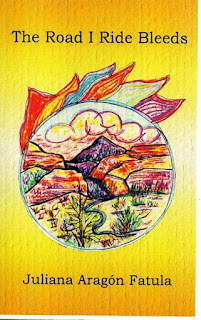 |
| The Road I Ride Bleeds my first chapbook. |
 |
|
My first children’s poetry book from Writing Workshops
Editor for Writers in the Schools Program
sponsored by Colorado Humanities Creative Industries Publishing.
|
 |
| My favorite mode of transportation in my youth: an Indian. |
 |
| My first book of Poetry. |
Several of my comadres have asked me, “How did you learn how to write?” Sometimes they ask about getting published. I tell them, “First read lots and lots of books about whatever interests you. Listen to different genres of music, go for long walks and listen to the sounds of nature…Then study the craft of writing in the genre you’ve chosen: Memoir, fiction, history, science, poetry, screenplays…Then begin writing every day and write about four pages a day, every day. Write about anything and everything and write non-stop for at least five minutes a session. Free writing about whatever is in your head. That way you get rid of the bullshit. And there’s lots of bullshit in your head, believe me.
I’ve written volumes about everything, journals, poetry, short stories, children’s plays, Chicana teatro, mysteries, essays, reviews, ideas, notes, letters, and ramblings. Each time I write, I learn something new about my style, voice, attitude, memories, loves, passions, fears, jealousy, despicable memories, joyous memories, binges of memories, loss of memories, dates, places, people, I’ve written essays on Shakespeare and Sherman Alexie, Sandra Cisneros and Walt Whitman. I’ve written all of my life and didn’t call myself a writer until my first poetry book was published, Crazy Chicana in Catholic City. That book saved my life. I’ve saved my soul several times.
Today I’m sixty years old and losing my mind and my memory. Both at the same time. But I have no complaints. I’m happier than I’ve ever been. I have a husband who loves me and makes me laugh when he sings and dances. He is fearless. He is a warrior. He is a feminist.
My son, turned forty-five. I’m sixty. Do the math. It’s a miracle, a miraculous conception of a naïve teenager with beautiful hair and eyes. My beauty was a curse. My loveliness a sorrow. I became a teenager in the seventies. I became a mother during the feminist movement and so my son is also a feminist. And he didn’t know what the definition was until today when I asked if he knew the meaning of the word, feminist, feminism…femme fatale. And he answered honestly, no. So I schooled him. I told him his grandfather, my father, was a feminist. My husband is also a feminist. And that he is a feminist. He just nodded his head and smiled.
I have no reason to be unhappy, but sometimes I miss my sisters, parents, abuelitos, tiós, madrinas, teachers, friends, ancestors. I write because if I don’t tell my story, who will. Y, que? I’ve had such great teachers, mentors, writer colleagues, writing workshops; I want to share what I’ve learned with you.
 |
|
2017 Las Cruces, N.M.
Writing Workshop on Sacred Memories with Denise Chavez
|
 |
|
two of my soul sisters, Judy and Tracy
celebrating my 60th in my Chicana Garden.
|
 |
|
Two more soul sisters:
Maria and Aimee partying in the backyard
eating moose burgers. July 2017
|
Promo Blues
/in Uncategorized/by Bethany Mainesby Bethany Maines
Yesterday, AB Plum talked about the woes of promoting. She’s not alone in finding that the grind of “getting yourself out there” is not fun. Most authors find that to be the hardest part of the job. We’re the kind of people who invent people to talk to. Talking to real people is just so, so, so much harder. Real people rarely say what we tell them to say for one thing. She also mentioned that she’s working on her marketing plan.
I see your hands coming up. “What is a marketing plan?” you ask. Excellent question.
A marketing plan is a comprehensive document or blueprint that outlines a business advertising and marketing efforts for the coming year. It describes business activities involved in accomplishing specific marketing objectives within a set time frame.
When Stars Take Flight takes the story of Thumbelina into space and reimagines the fairy tale for a new age—the future.
Maines is the author of the Carrie Mae Mystery Series, Tales From the City of Destiny, San Juan Islands Mysteries, Shark Santoyo Crime Series, and numerous
short stories. When she’s not traveling to exotic lands, or kicking some
serious butt with her fourth degree black belt in karate, she can be found
chasing her daughter or glued to the computer working on her next novel. You
can also view the Carrie Mae YouTube
video or catch up with her on Twitter and Facebook.

